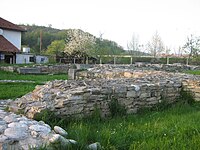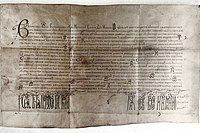
Visoko is a city located in the Zenica-Doboj Canton of the Federation of Bosnia and Herzegovina, an entity of Bosnia and Herzegovina. As of 2013, the municipality had a population of 39,938 inhabitants with 11,205 living in Visoko town. Located between Zenica and Sarajevo, Visoko lies where the river Fojnica joins the Bosna.

The House of Kotromanić was a late medieval Bosnian noble and later royal dynasty. Rising to power in the middle of the 13th century as bans of Bosnia, with control over little more than the valley of the eponymous river, the Kotromanić rulers expanded their realm through a series of conquests to include nearly all of modern-day Bosnia and Herzegovina, large parts of modern-day Croatia and parts of modern-day Serbia and Montenegro, with Tvrtko I eventually establishing the Kingdom of Bosnia in 1377. The Kotromanić intermarried with several southeastern and central European royal houses. The last sovereign, Stephen Tomašević, ruled briefly as Despot of Serbia in 1459 and as King of Bosnia between 1461 and 1463, before losing both countries – and his head – to the Ottoman Turks.
Bošnjani, meaning Bosnians, is the name originating from the Middle Ages, used for the inhabitants of Bosnia. The name is used and can be found in Bosnian written monuments from that period, appearing in Venetian sources as earliest as 12th century, according to investigation of the relations between Bosnia and Venetia by historian Marko Šunjić, and other documents until at least early 16th century and the Ottoman conquest and power stabilization.
Vladislav of Bosnia was a member of the House of Kotromanić who effectively ruled the Banate of Bosnia from September 1353 to his death.
Stephen Ostoja was King of Bosnia from 1398 to 1404 and from 1409 to 1418.
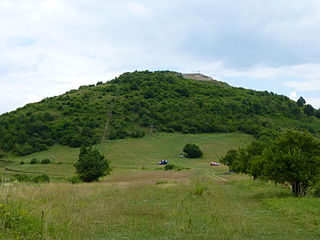
Podvisoki was a medieval settlement, a castle town, as part of wider area just beneath of the fortress Visoki, located on the Visočica hill above modern-day Visoko, Bosnia and Herzegovina.
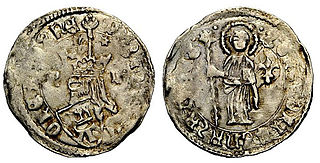
Stephen Tvrtko II, also known as Tvrtko Tvrtković, was a member of the House of Kotromanić who reigned as King of Bosnia from 1404 to 1409 and again from 1420 to his death.
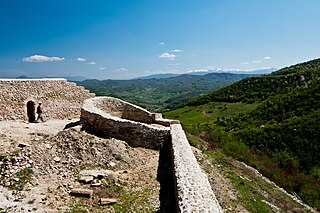
The Old town of Visoki was a medieval royal castle town built during the 14th century on the top of the hill overlooking town of Visoko, Bosnia and Herzegovina. The first mention of the town was on 1 September 1355, in the charter "in castro nosto Visoka vocatum" written by Tvrtko I of Bosnia while he was a young ban. The town was presumably abandoned before 1503, as it is not mentioned in the Turkish-Hungarian treaty from the mentioned year. In 1626, Đorđić mentioned Visoki among abandoned towns.

Usora was important zemlja of the medieval Bosnian state, first banate and later kingdom, although it also had some periods outside its jurisdiction and royal authority, when it was connected with neighboring banates of Slavonia, or Mačva at times. The administrative seat of this zemlja was Srebrenik, which also served as residence for its rulers for entire period of existence of the medieval Bosnian state. It took its name from the river Usora.
Kujava Radinović was the second wife of King Stephen Ostoja of Bosnia and as such she was Queen of Bosnia from 1399 to 1404 and again from 1409 to 1415. She was the daughter of the nobleman Radin Jablanić.

The Kingdom of Bosnia, or Bosnian Kingdom, was a medieval kingdom that lasted for nearly a century, from 1377 to 1463, and evolved out of the Banate of Bosnia, which itself lasted since at least 1154.
Stephen Ostojić was King of Bosnia from the death of his father Ostoja in 1418 until his deposition by the nobility in 1420.

Donji Kraji or Donji Krajevi, was a small medieval zemlja of medieval Bosnian state. Its territory was mostly laid within the boundaries of today's Bosanska Krajina in northwestern Bosnia and Herzegovina.
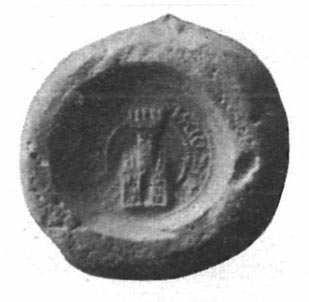
Pavle Radinović, sometimes Radenović,, was one of the most powerful Bosnian nobleman under Tvrtko I, Dabiša, Jelena Gruba, Ostoja, Tvrtko II and Ostoja again. He was a knez and the head of Radinović-Pavlović noble family, a powerful magnate clan whose initially possessions spread from central to eastern Bosnia, gravitating around the Prača - Miljacka river axis, between the Krivaja Drina and the Upper Bosna rivers, with the seat in Borač and Pavlovac between Prača and Rogatica, and also held mines in Olovo and Fojnica.
Milodraž was a settlement in the Kingdom of Bosnia, situated on an important road connecting the towns of Visoko and Fojnica. No remains of it have been found, but royal charters and Ragusan documents confirm that one of the residences of King Tvrtko II and King Thomas was located there.

Royal Court in Sutjeska was a medieval Bosnian court, residence and administrative seat of the Bosnian king, from mid-fourteenth to mid-fifteenth century, located in present-day Kraljeva Sutjeska, Bosnia and Herzegovina. The compound consisted of several buildings, chapel, and the nucleus of what will later become Kraljeva Sutjeska Franciscan Monastery.

Mile is archaeological medieval site located in the Visoko basin, in present day Arnautovići village near Visoko, Bosnia and Herzegovina. The site was a medieval crowning and burial church of Bosnian kings during the Bosnian Banate and later Kingdom, between its construction in 1340 and the fall of the Kingdom in 1463.
The Pribinić family, also Radosalić family or Radosalić–Pribinić family, were a prominent medieval Bosnian noble family, a holder of the hereditary honor, which ruled over the medieval župa of Lepenica, a part of the medieval Bosnian state. Župa Lepenica was located in central Bosnia and included modern day's towns of Kiseljak, Fojnica and Kreševo. The Lepenica was mentioned for the first time in 1244 in the charter of the Hungarian king Bela IV, along with other parishes that existed in the area of central Bosnia.

Bosansko Primorje is a historical coastal region on the eastern Adriatic shores, which between the beginning of the 14th and the end of the 17th century stretched from the Neretva river delta to Kuril area of Petrovo Selo, near today's Dubrovnik, above Mokošica in Rijeka Dubrovačka. This region is referred in historiography as the Bosansko Primorje, Bosnian Littoral or Bosnian Coast.
Dragiša Dinjičić was a knez from the Bosnian noble Dinjičić family, which had its estates in the eastern parts of the medieval Bosnian state, in the Jadar region. He was the son of the Župan Dinjica.




